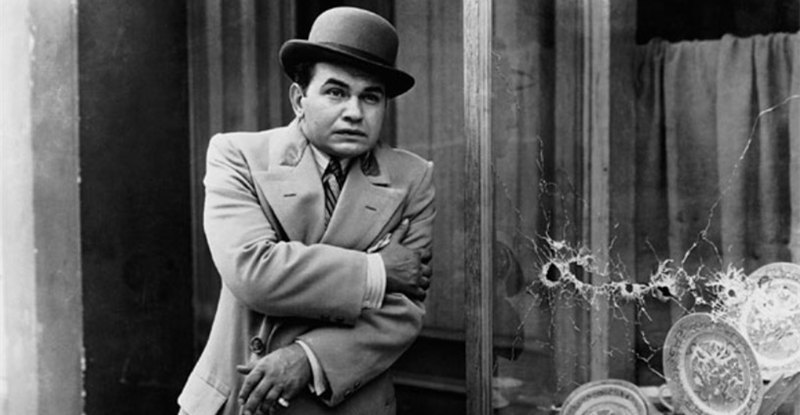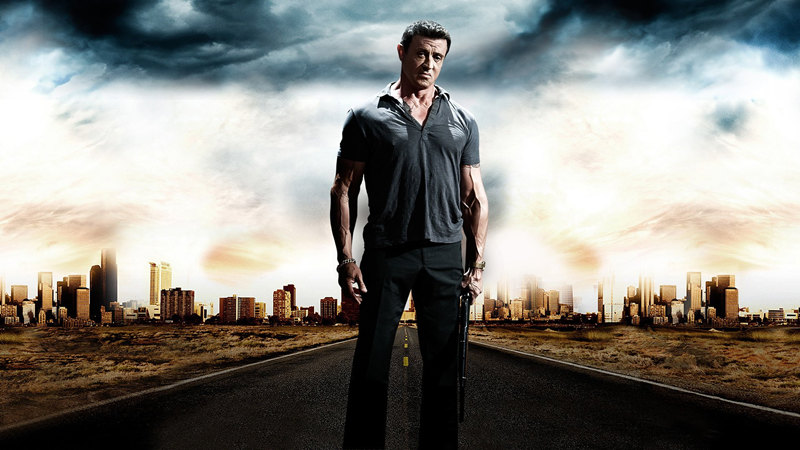The “Ace Ventura” pictures have always struck me as the kinds of things that seem screamingly funny to you when you first see them, especially if you’re young, and then years later when you look back on them, they make you wonder what made you laugh.
It’s also struck me as odd why any actor would want to embarrass himself on-screen to the extent Jim Carrey does in the two “Ace Ventura” movies by constantly mugging, overacting, and demanding attention in every scene; but then I remember that the first “Ace” film was an instant hit and made Carrey an international big-screen star. Who wouldn’t want that? In particular because it allowed him to go on and do more serious work in things like “The Truman Show,” “Man on the Moon,” “The Majestic,” and “Eternal Sunshine of the Spotless Mind.”
Anyway, given Carrey’s success and the fact that he’s even considering a future “Ace Ventura” project, Warner Bros. have repackaged the two previous “Ace” movies in a double-feature set, and it’s not just one of those two-sided single discs with compressed picture quality, either. No, siree! Instead, we get each movie newly remastered on a separate DVD, with a third disc of “Ace Ventura” cartoons thrown in for good measure. For non-fans of the “Ace” character like me, it still doesn’t do much, but for the die-hard fan, it must be heaven-sent.
Disc One: “Ace Ventura: Pet Detective”
The same year Carrey did “Ace Venture: Pet Detective,” 1994, he did “The Mask,” in which he played a character who acted wild and crazy when he put on an enchanted mask, and “Dumb & Dumber,” in which he played a character who was wild and crazy because he was simply dumb. As Ace Ventura, however, we have to ask ourselves why the character is behaving the way he is. He is neither enchanted nor dumb. He’s just an idiot.
Carrey has no funny lines and no funny gags; what he’s left with is acting silly, striking poses, making faces at the camera, and generally behaving in a manner that would make Jerry Lewis blush. Yet his bizarre behavior, gaudy clothes, and goofy hairdo went over with audiences everywhere. I am still mystified, but there you are. One of viewers’ favorite scenes is where Carrey talks through his rear end. While it is remarkably juvenile, people seem to like it.
Carrey plays Ace Ventura, a Miami pet detective who specializes in finding lost or stolen animals. In this first movie, the Miami Dolphins football team hire Ace to find their kidnapped mascot, a dolphin. As Ace goes about his investigation, he displays an intelligence that verges on the uncanny, a knack for detection that makes Sherlock Holmes looks like an amateur. Which is why one has to wonder why such a smart fellow acts so foolishly in every scene. There are a couple of moments when he actually speaks in a normal voice, brief moments, to be sure, but moments. Then it’s back to his absurd and witless mannerisms. One can only suppose that Carrey realized the filmmakers hired him because of his zaniness, and he tried to reinforce this impression in every shot. It verges on the egomaniacal.
Not that I think the movie is without at least a couple of good points. I liked Ace’s remark about a character’s disappearance, saying, “He did a Claude Rains.” I liked his slow-motion act. I liked his pet monkey aping him. And I liked a couple of the supporting players: Courtney Cox as the Dolphins’ representative trying to get the mascot back and unaccountably becoming attracted to Ace; Sean Young as a tough, cold, but sexy police lieutenant investigating a related case; and Tone Loc as Ace’s friend on the police force. Poor Dan Marino, the Dolphins’ quarterback at the time, gets dragged into the movie to give it a bit of a realistic lift and does the best he can. The director, Tom Shadyac, went on to better things with Carrey–“Liar Liar” and “Bruce Almighty,” for example.
The best part of “Pet Detective,” though, is the opening sequence in which Ace tries to rescue a sweet little dog from a very big, angry man. From there on, the movie heads south. 4/10
Video:
This is a first-time widescreen DVD release for “Pet Detective,” and, what’s more, WB give it a new, high-bit-rate, anamorphic transfer. The result is a fairly clean, nice-looking picture all the way around in screen dimensions that fill up a 16×9 television screen. The only visible grain is very fine, very light, probably inherent to the original film stock.
Audio:
The WB engineers remastered the film’s soundtrack in DTS and Dolby Digital 5.1. It is loud and raucous to match the movie, providing a good front-channel stereo spread, good overall balance, and decent dynamics. But, dang, is it boisterous, and, surprisingly, there is not a lot of rear-channel activity except a touch of musical ambience reinforcement.
Extras:
The main extra on disc one is an audio commentary by director Tom Shadyac that is informative but not entirely inspiring. One thing I found interesting was his remark that before this film, his career was only so-so, but the minute the film clicked, people overwhelmed him with offers to direct. Such is the power of the box office. In addition, there is a fullscreen theatrical trailer; several TV spots; English as the only spoken language; English, French, and Spanish subtitles; and thirty-five scene selections but no chapter insert.
Disc Two: “Ace Ventura: When Nature Calls”
Given the huge receipts for the first movie in 1994, Warner Bros. doubled the budget for this sequel in 1995. For their trouble, they got half as funny a film.
Given, too, that I didn’t care all that much for the original, you can perhaps understand how much less I liked “When Nature Calls.” Everything the filmmakers thought worked in the first film they exaggerate in the second. When you consider that there was almost no subtlety involved the first time around, it gives you idea of the follow-up. The filmmakers even make Ace’s hair more preposterously stylized. The director, Steve Oedekerk, went on to do “Kung Pow: Enter the Fist” and “Barnyard.” Maybe he works best with cartoon or cartoonish characters. Here, he seems content to leave Carrey to his own ego and not get in the way.
This time out, we find Ace in Africa, where he is trying to locate a Great White Sacred Bat that’s gone missing. If he can’t find it, it will mean a civil war between two rival tribes. The funniest scene is in a Buddhist monastery, where Ace has gone to recover from a disheartening experience. When a fellow shows up looking to hire him and take him away on a new case, the monks jump for joy. Unfortunately, their gain is our loss; we have to live with the character for the next hour or more.
The rest of the movie is a series of pratfalls and manic reactions. The running joke is the way Ace parks a Land Rover by rolling it over several times before settling it, one side up or the other, in a parking space. I found these scenes jaw-droppingly awful, but they are about the best we’ve got. The movie makes a couple of TV and movie references that border on sly–Carrey’s William Shatner imitation from “The Twilight Zone” (“Nightmare at 20,000 Feet”), his rendition of “Chitty Chitty Bang Bang,” and bits related to “Secret Agent” and “Mr. Belvedere.” But it’s only passing. Most of the time, the moviemakers seem to mistake political incorrectness for humor, hoping to get laughs from native tribesmen spitting in one another’s face as a sign of friendship. When a film expects me to chuckle at actors spitting on each other, I figure it’s time to move on.
By the second half of “When Nature Calls,” the jokes have gotten so bad, so humorless, so appallingly dreadful that the movie becomes downright hard to sit through. Thank heaven for the pause button and the few dozen breaks that helped relieve the pain. 2/10
Video:
Like “Pet Detective,” “When Nature Calls” sports a new digital transfer, this one also done up at a high bit rate and enhanced for widescreen TVs. The big difference is in screen size, where the newer film was shown theatrically at a 2.40:1 ratio to the earlier film’s 1.85:1. On disc, “When Nature Calls” measures about 2.15:1 across my television. As on the companion disc, the definition is sharp, the colors are bright and natural, and the grain is even lighter. They are both excellent transfers.
Audio:
Like the picture quality, the sound on this second disc is a tad better than on the first. Again it’s mastered in DTS and Dolby Digital 5.1, this time revealing a bigger bass and oodles of rear-channel activity. In fact, the bass, surround, and dynamics are sometimes too much of a good thing, bordering on overwhelming the rest of the movie.
Extras:
There is no director commentary on this one, but there are again a fullscreen theatrical trailer and TV spots; English as the only spoken language; English, French, and Spanish subtitles; and thirty-five scene selections but no chapter insert.
Disc Three: “Ace Ventura: The Animated Series”
The real bonus in the set is this third disc, containing three episodes from the 1996 animated television show. The episodes last a little over twenty minutes or so each and include “The Rein-Deer Hunter,” “Natural Born Koalas,” and “Dragon Guy.” They are in 1.33:1, television fullscreen dimensions and sport a Dolby Digital stereo soundtrack.
The animation style is not very sophisticated, Jim Carrey does not lend his voice to Ace, and not even the characters’ lip movements seem to match the vocals. After a few minutes with each show, I decided to quit watching them altogether.
Parting Shots:
In “Dumb & Dumber” Jim Carrey had a funny partner and plenty of funny dialogue, and in “The Mask” he had a clever script and clever special effects. In the “Ace Ventura” movies he has nothing funny to say and nothing funny to do. For the “Ace Ventura” admirer, WB’s three-disc set, with its first-class picture and sound, is a blessing. For me, it was three discs too many.


